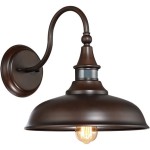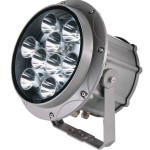Outdoor Portrait Photography Lighting Techniques
Outdoor portrait photography presents unique opportunities to leverage natural light for stunning results. However, understanding how to manipulate and control this light source is crucial for creating compelling portraits. This article will explore several key lighting techniques that can enhance outdoor portrait photography.
Golden Hour Glow
The golden hour, occurring shortly after sunrise and before sunset, offers a magical quality of light highly sought after by photographers. The sun's low angle creates a warm, diffused light that minimizes harsh shadows and adds a flattering golden hue to skin tones. During this time, the light is also less intense, allowing for wider apertures and shallower depth of field, creating a pleasing separation between the subject and the background. Photographers can further enhance the golden hour glow by positioning the subject so that the light hits them at a slight angle, creating a gentle, three-dimensional effect.
Utilizing reflectors during the golden hour can further refine the lighting setup. A reflector can bounce the warm light back onto the subject's face, filling in any shadows and adding a subtle catchlight to the eyes. This technique can help to brighten the subject’s features and create a more balanced exposure, especially when shooting against a bright background. Experimenting with different reflector sizes and positions can dramatically alter the final image.
Open Shade Mastery
While direct sunlight can create harsh shadows and lead to squinting subjects, open shade offers a softer, more diffused lighting option. Open shade is created when the subject is placed in the shade, but still has access to the open sky. This type of lighting is particularly useful on bright, sunny days when direct sunlight is too intense. Positioning the subject just outside the edge of a building's shadow or under a large tree can create beautifully even lighting across the face. This technique minimizes harsh shadows and produces a more natural, flattering look.
Photographers should pay attention to the direction of the open sky when utilizing this technique. A larger expanse of open sky on one side of the subject will create a subtle gradation of light, with the side facing the larger sky appearing brighter. This can be used creatively to add depth and dimension to the portrait. Reflectors can also be used in open shade to bounce light back into the shadowed areas and create a more balanced exposure.
Backlighting Brilliance
Backlighting, where the light source is behind the subject, can create dramatic and ethereal portraits. When shooting with backlighting, the subject is often rendered as a silhouette, which can add a sense of mystery and intrigue. However, achieving a properly exposed backlit portrait requires careful attention to camera settings. Exposing for the subject will often blow out the background, while exposing for the background can leave the subject underexposed.
To balance the exposure, photographers can use a reflector to bounce light back onto the subject's face, or utilize spot metering to ensure the subject is properly exposed. Alternatively, embracing the high-key effect of a blown-out background can create a dreamy, high-fashion look. Backlighting can also be used to create a rim light around the subject's hair and body, separating them from the background and adding a three-dimensional quality to the image.
Overcast Day Opportunities
Overcast days are often perceived as challenging for photography, but they present unique advantages for portraiture. The cloud cover acts as a giant softbox, diffusing the sunlight and creating a soft, even light that is ideal for capturing flattering portraits. The lack of harsh shadows eliminates the need for complex lighting setups and allows photographers to focus on composition and posing. Overcast skies also provide a neutral, consistent light source, which simplifies post-processing and ensures accurate color reproduction.
While overcast days offer a naturally soft light, photographers can still use reflectors to add a subtle highlight to the subject's face and fill in any remaining shadows. Furthermore, the even lighting conditions on overcast days make them ideal for capturing portraits with shallow depths of field, as the wider apertures required won't result in blown-out highlights or harsh contrasts.
Diffusion and Reflectors
Diffusion and reflection tools are essential components of any outdoor portrait photographer's kit. Diffusion panels soften the light, reducing harsh shadows and creating a more flattering look. Reflectors bounce light back onto the subject, filling in shadows and creating a catchlight in the eyes. These tools are particularly useful in situations with strong, directional light, such as midday sun. By diffusing and reflecting the light, photographers can create a more balanced and aesthetically pleasing image.
Understanding the interplay of light and shadow is crucial for creating compelling outdoor portraits. By mastering these techniques, photographers can effectively utilize natural light to produce images that are both technically sound and artistically expressive.

11 Outdoor Portrait Photography Tips For Easy Shots

11 Outdoor Portrait Photography Tips For Easy Shots

Outdoor Portrait Lighting E Book Jojo Cooper

Off Flash Vs Natural Light Which Is Best For Outdoor Portraits Shutterbug

Best Portrait Lighting Guide For Stunning Photos Adobe

Pin By David Casimer On Photography Ideas Lighting Setup Portrait Studio

5 Easy Tips For Better Natural Light Portrait Photography

11 Outdoor Portrait Photography Tips For Easy Shots

Tips On How To Find Good Natural Lighting Vs Bad Light In Outdoor Portrait Photography For Beginners

Outdoor Flash Photography Tips For Natural Or Dramatic Portraits
Related Posts







